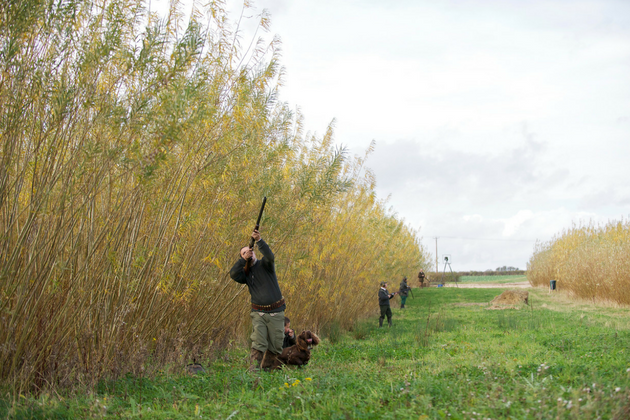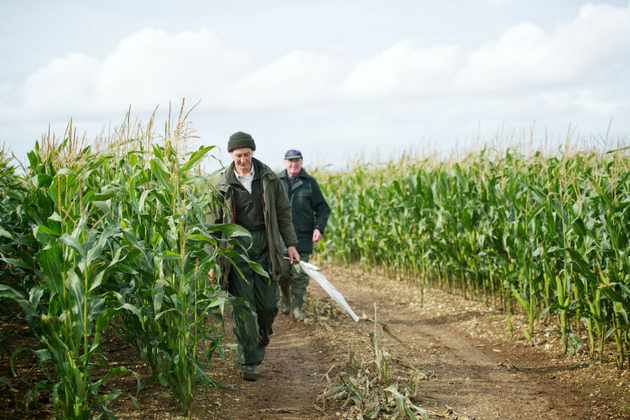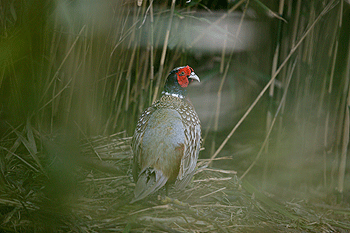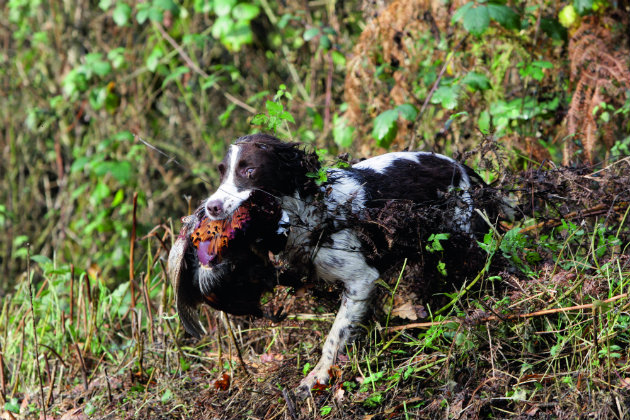Making cover-crops pheasant friendly
Win CENS ProFlex DX5 earplugs worth £1,149 – enter here
The best cover crops for the part-time keeper

Cover crops can do many things to enhance a shoot:
- Provide options for early-season drives when the woods might have too much leaf on the trees to push pheasants out
- Link areas of land where there are no natural transfer points such as hedges or ditches
- Give more options in terms of areas we can shoot, eg transforming a massive hill field into a haven for game to be flushed.
- Provide wildlife with shelter during the winter, cover from predators during the spring and a significant food source at all times of the year

Planning is as important as selection when it comes to cover crops
What’s best to grow?
To reduce yearly management and time pressures, I recommend introducing a three-crop/mix rotation: annual maize or cereal-based wild bird seed mix, biennial kale (with careful planning) and a perennial mix that has a selection of seed-bearing crops.
All too often, we see drives full of birds at certain times of day during the week, even in the poor covers, but what is often overlooked is the fact that they are just going there to get some food and then straight off to a nice warm bit of scrub out of the way because there is nothing to hold them. If your covers are good, warm, thick and full of food, when you come to shoot on a Saturday they should also be full of birds.
What ground cover is the hardest for a gundog to work?
A multi-purpose gundog of any breed should be able to deal with anything that is put in front of it. But depending on…
Best cover crops – advice from the experts
Maize is a central cover for most DIY shoots. It is reliable and easy to establish by following some basic husbandry steps, says Chris Bright of Bright Seeds.
- A good seedbed is essential: maize hates compaction so ploughing and/or sub-soiling is advised.
- Be wary of drilling too early, and ensure the crop has enough fertilizer to get away quickly — some maize drills enable placement fertilizer to be slotted in next to the planted seed.
- A herbicide programme to ensure a clean crop must be implemented — game birds, especially partridges, like clean soil under the canopy.
- Choosing a game maize able to withstand the rigours of the whole shooting season is essential, so avoid the commercial silage maize and use proper game cover seed.

Maize is the keeper’s choice of cover crop, but adding something else will enhance it – for your birds and the Guns
Meehal Brint of Kings Crops says:
Before suggesting mixtures my first piece of advice is always the same — take time to plan:
- Who will prepare the plot?
- Who will drill the seed?
- When can the land be drilled?
- Should it comply with a stewardship scheme?
- Is there fodder requirement at the end of the season?
- Who will apply fertilizers and agrochemicals?
- Can anyone inspect for pest species? This is particularly important if establishing kale.
- Finally — keep things simple.

A good seedbed is essential, as is making sure it suits your chosen crop
Tim Furbank, Oakbank Game & Conservation advises:
- Much depends on what equipment the syndicate has access to and the accessibility and size of the game cover plots. If a syndicate member is a farmer they will be able to drill, spray and fertilize the plots. That means your choice of crop is only limited by the soil type and aspect of the plot. You should be able to grow most straights — maize, sorghum and so on — or preferably crops with more conservation benefits, such as mixes including brassicas, quinoa and millet linseed.
- If access to equipment is limited, I would advise many DIY syndicates to go for longer-term crops such as chicory, canary grass and fennel or planting some strips of miscanthus.
- Taking care of crops in the establishment year is crucial; there is no point investing in perennials if you don’t get the establishment right. Make sure weeds are dealt with prior to drilling and sow according to your seed supplier’s recommended seed rate and row widths.
- In my experience, people are still drilling perennials in far too tight row widths and the complaint is usually that the birds won’t go in them. Weed-free and wide rows are more accessible and attractive to game.
Related Articles
Get the latest news delivered direct to your door
Subscribe to Shooting Times & Country
Discover the ultimate companion for field sports enthusiasts with Shooting Times & Country Magazine, the UK’s leading weekly publication that has been at the forefront of shooting culture since 1882. Subscribers gain access to expert tips, comprehensive gear reviews, seasonal advice and a vibrant community of like-minded shooters.
Save on shop price when you subscribe with weekly issues featuring in-depth articles on gundog training, exclusive member offers and access to the digital back issue library. A Shooting Times & Country subscription is more than a magazine, don’t just read about the countryside; immerse yourself in its most authoritative and engaging publication.









